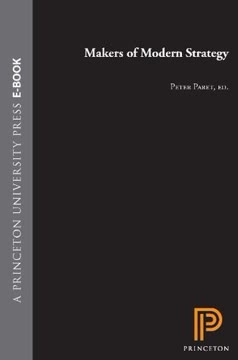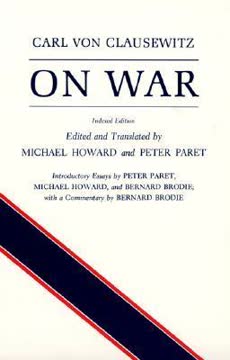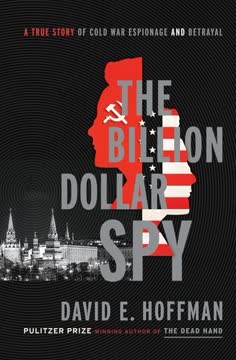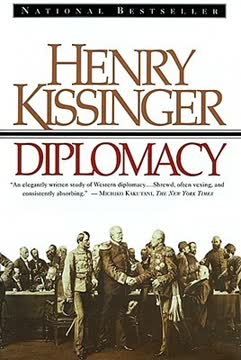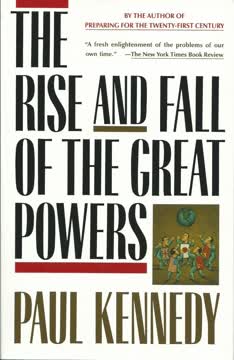Key Takeaways
1. From Dynastic Skirmishes to Total War: The Expanding Scope of Conflict
"War before the French Revolution was essentially a clash between rulers. Since that event it has become increasingly a clash between peoples, and hence has become increasingly 'total.'"
The nature of warfare underwent a profound transformation from the Renaissance to the 20th century, shifting from limited dynastic conflicts to mass, national, and eventually total wars. Machiavelli first recognized the need for native troops and decisive battles, moving beyond medieval chivalry. This early shift was driven by the rise of money economies and the state's desire to free itself from feudal military obligations, laying the groundwork for more organized, if still professional, armies.
The French Revolution marked a pivotal moment, unleashing popular passions and universal conscription, which dramatically expanded the scale and intensity of conflict. Napoleon, leveraging these new forces, demonstrated that war could be waged with unprecedented speed, mobility, and destructive power, aiming for the complete annihilation of enemy armies rather than mere positional advantage. This revolutionary approach shattered the old European balance of power and set new, more absolute, standards for military objectives.
The 20th century witnessed the culmination of this trend, with two World Wars mobilizing entire societies and economies for prolonged, attritional struggles. The distinction between combatant and non-combatant blurred, and the objectives expanded from territorial gains to the complete subjugation or ideological transformation of enemy nations. This relentless expansion of war's scope, driven by nationalism, industrialization, and ideology, fundamentally altered the relationship between states and the nature of human conflict.
2. The Professionalization of Arms: Rise of the General Staff
"The Prussian general staff, which became the brains and nerve center of the army... enabled the general staff gradually to take a leading hand in military affairs, not merely after the outbreak of war, but also in the preparation and initial phase of a war."
The professionalization of armies began in the 17th century, moving away from unreliable mercenary forces towards disciplined, standing armies. Maurice of Nassau, Gustavus Adolphus, and Montecuccoli pioneered reforms emphasizing drill, training, and a hierarchical chain of command, transforming soldiers into reliable instruments of state policy. This shift was crucial for sustained military operations and the emergence of the modern state.
The Prussian General Staff, a unique institution, epitomized this professionalization, becoming the intellectual and organizational core of the army. Under figures like Scharnhorst, Gneisenau, and especially Moltke the Elder, it developed systematic planning, advanced military education, and the concept of Auftragstaktik (mission tactics), which fostered decentralized initiative within a unified strategic framework. This allowed for the efficient mobilization and coordination of large armies, a key factor in Prussia's 19th-century victories.
The General Staff's influence extended beyond wartime operations, shaping peacetime training, doctrine, and even the political landscape. It became a self-conscious elite, dedicated to the "science of war," often asserting its autonomy from civilian control. This institutionalized expertise, while contributing to military effectiveness, also created a rigid, technocratic approach to warfare that sometimes overlooked broader political and social realities, leading to tragic consequences in the 20th century.
3. Strategy as the Nexus of Politics and Force: Clausewitz's Enduring Insight
"War is merely the continuation of policy by other means."
Clausewitz's seminal dictum fundamentally redefined strategy, asserting that war is not an autonomous act but an integral extension of political purpose. He argued that military objectives must always be subordinated to political aims, and that the character of war—whether absolute or limited—is determined by the political stakes involved. This insight provided a crucial framework for understanding the complex interplay between violence and statecraft.
The "remarkable trinity" of violence and passion (people), uncertainty and chance (military), and political purpose (government) encapsulates Clausewitz's holistic view of war. He recognized that any theory or policy ignoring one of these elements would be flawed. This framework highlights the inherent unpredictability and emotional intensity of conflict, while insisting on the guiding hand of rational political calculation.
The tension between theory and reality was central to Clausewitz's thought. He distinguished between "absolute war" (the theoretical extreme of total violence) and "real war" (always constrained by political, social, and material factors). His concept of "friction"—the myriad unforeseen difficulties in war—underscored the gap between planning and execution, emphasizing that military genius lies in overcoming these impediments and adapting to fluid circumstances, always with the political objective in mind.
4. Technology's Relentless March: Reshaping the Battlefield
"It is not the 'free creations of the mind' of generals of genius that have revolutionized war, but the inventions of better weapons and changes in the human material, the soldiers..."
From gunpowder to precision munitions, technological innovation has been a constant, transformative force in warfare. Vauban's scientific approach to fortification and artillery in the 17th century, for instance, fundamentally altered siege warfare and strengthened the state's power. The introduction of the musket, flintlock, and bayonet increased infantry firepower, leading to larger armies and new tactical formations.
The Industrial Revolution accelerated this trend, bringing forth:
- Rifled weapons (muskets and artillery) that dramatically increased lethality and range, making frontal assaults prohibitively costly.
- Railways and telegraphs that revolutionized mobilization, logistics, and command, enabling the rapid deployment and coordination of massive armies over vast distances.
- Machine guns and quick-firing artillery that further entrenched the defensive advantage, leading to the stalemate of trench warfare in World War I.
The 20th century saw the advent of tanks, aircraft, and eventually nuclear weapons, each profoundly reshaping the battlefield. Tanks and motorized infantry offered new possibilities for mobility and deep penetration (Blitzkrieg), while air power introduced a third dimension for reconnaissance, tactical support, and strategic bombing. These technological leaps continually challenged existing doctrines, forcing military thinkers to adapt or face obsolescence, and ultimately leading to the unprecedented destructive potential of modern warfare.
5. The Quest for Decisive Victory: Annihilation, Attrition, and Envelopment
"To win a battle means to compel your opponent to yield you his position."
The pursuit of decisive victory has been a central, yet often elusive, goal in military strategy, oscillating between strategies of annihilation (Niederwerfungsstrategie) and exhaustion (Ermattungsstrategie). Machiavelli advocated decisive battles to achieve political ends, a concept later embraced by Napoleon, who sought the utter destruction of enemy armies through rapid maneuver and concentrated force. This approach, aiming for a swift, conclusive blow, became the ideal for many subsequent military leaders.
Delbrück's distinction between these two strategic forms highlighted that not all wars could or should aim for annihilation. He argued that Frederick the Great, for instance, often pursued a strategy of exhaustion, conserving his limited resources through maneuver and positional warfare rather than risking everything on a single, decisive battle. This nuanced view challenged the prevailing 19th-century dogma that annihilation was the only true form of strategy.
Moltke and Schlieffen refined the concept of strategic envelopment (Kesselschlacht or Cannae principle) as the means to achieve annihilation in the industrial age. Their plans aimed to encircle and destroy enemy forces in a single, decisive battle, often involving complex maneuvers and the coordination of multiple armies. However, the devastating firepower of modern weaponry, as seen in World War I, often led to attritional stalemates, forcing commanders to accept prolonged, costly struggles that exhausted both armies and nations.
6. The Economic Sinews of War: From Mercantilism to Industrial Mobilization
"Defense is of much more importance than opulence."
The economic foundations of military power have been a persistent theme in strategic thought, evolving from mercantilist principles to the industrial mobilization of total war. Mercantilism, as articulated by Colbert, viewed trade and finance as vital nerves of war, advocating state intervention to build national wealth and self-sufficiency for military strength. Adam Smith, while championing free trade, conceded that national defense superseded economic opulence, justifying protectionist measures for vital industries like shipping.
Alexander Hamilton and Friedrich List further developed economic nationalism, arguing for diversified national economies to ensure self-sufficiency in wartime. Hamilton's "Report on Manufactures" stressed the need for domestic production of military supplies, while List, observing the American experience, advocated tariffs and railway networks to unify Germany and enhance its military potential. Both recognized that economic strength was indispensable for national security and power projection.
The World Wars demonstrated the ultimate integration of economy and military power, leading to total industrial mobilization. Nations transformed their entire productive capacities to support prolonged, high-intensity conflicts, with victory often hinging on the ability to outproduce and outlast the enemy. This era saw the rise of "war economies" and the recognition that economic planning was an inseparable component of grand strategy, profoundly influencing the scale and duration of modern conflicts.
7. The Complexities of Coalition: Forging Unity Amidst Divergent Interests
"One bad general would be better than two good ones."
Coalition warfare has been a recurring necessity in modern history, yet it consistently presents profound challenges due to divergent national interests and command complexities. Napoleon, for instance, frequently exploited the disunity and divided command of his allied opponents, demonstrating that even numerically superior forces could be defeated piecemeal if they lacked a unified strategic vision. His dictum on generals underscored the perils of fragmented authority.
The World Wars brought coalition warfare to an unprecedented scale, highlighting the difficulties of coordinating diverse political objectives and military strategies. In World War I, the Allied powers struggled with strategic disagreements and civil-military tensions, often leading to costly, uncoordinated offensives. In World War II, the Grand Alliance of the UK, US, and USSR, though united against a common enemy, constantly grappled with conflicting priorities:
- Britain's peripheral strategy (Mediterranean, bombing, blockade)
- America's "Germany First" and "mass and concentration" approach (direct cross-Channel invasion)
- Soviet Union's focus on the Eastern Front (demanding a second front in the West)
Strategic compromises were the norm, often driven by political expediency and the shifting balance of power within the alliance. The "Europe First" decision, the debate over the "second front," and the eventual agreement at Tehran reflected a continuous struggle to reconcile national interests with the demands of a global conflict. This intricate dance of diplomacy and military planning underscored that effective coalition strategy is as much about managing allies as it is about defeating enemies.
8. Air Power's Ascendance: The Third Dimension of Warfare
"As far as can at present be foreseen there is absolutely no limit to its future independent war use."
The advent of air power in the 20th century introduced a revolutionary third dimension to warfare, challenging traditional notions of land and sea conflict. Early theorists like Major J. D. Fullerton envisioned aircraft as capable of decisive strikes against enemy capitals, rendering surface forces secondary. World War I saw the rapid evolution of aircraft from reconnaissance tools to instruments of tactical support and, eventually, independent strategic bombing.
Interwar theorists like Giulio Douhet, Billy Mitchell, and Alexander de Seversky championed the idea of an independent air force capable of winning wars by striking directly at an enemy's industrial and population centers. They argued that air power's speed, range, and destructive potential would bypass entrenched ground defenses, shattering civilian morale and forcing rapid surrender. This vision, though often premature in its technological assumptions, profoundly influenced military planning.
World War II provided the first large-scale test of these theories. While strategic bombing campaigns against Germany and Japan proved devastating, they did not achieve victory solely through air power, often requiring immense resources and prolonged efforts. However, the war also demonstrated air power's crucial roles in:
- Close air support and interdiction for ground forces (e.g., Blitzkrieg tactics).
- Naval aviation (e.g., carrier battles in the Pacific).
- Air defense (e.g., Battle of Britain).
The atomic bomb, delivered by air, further cemented air power's perceived decisive role, ushering in the nuclear age.
9. The Nuclear Revolution: Deterrence in an Age of Absolute Weapons
"Thus far the chief purpose of our military establishment has been to win wars. From now on its chief purpose must be to avert them."
The atomic bomb fundamentally altered the nature of warfare, introducing weapons of such destructive power that their primary purpose shifted from winning wars to deterring them. Bernard Brodie's seminal insight in 1945 established deterrence as the cornerstone of nuclear strategy, recognizing that the sheer scale of potential devastation made traditional notions of military victory obsolete in a full-scale nuclear exchange.
The Cold War intensified this dilemma, as the US and USSR engaged in an unprecedented arms race. The "massive retaliation" doctrine of the 1950s, threatening instant, overwhelming nuclear response to any aggression, aimed to leverage temporary US nuclear superiority for cost-effective deterrence. However, the rapid development of Soviet nuclear capabilities soon led to a "balance of terror," where both superpowers possessed the capacity for "mutual assured destruction" (MAD).
The search for stability became paramount, leading to complex theories of:
- First strike vs. second strike capabilities: The ability to destroy an enemy's nuclear forces before they can retaliate, versus the capacity to absorb an attack and still inflict devastating damage.
- Escalation control: Attempts to manage the intensity and scope of nuclear conflict, with concepts like "escalation ladders" and "flexible response."
- Arms control: Efforts to limit the proliferation and deployment of nuclear weapons to reduce the risk of accidental or intentional war.
This era transformed strategic thought into a highly specialized, often abstract, field dominated by civilian analysts grappling with the unprecedented implications of absolute weapons.
10. Revolutionary War: The Politicization of Armed Struggle
"Political power grows out of the barrel of a gun."
Revolutionary war, as a distinct strategic concept, emerged in the 20th century, fundamentally politicizing armed struggle. Unlike conventional interstate warfare, its primary aim is the seizure of state power through popular mobilization and often unconventional military means. Mao Tse-tung's writings became the foundational text, emphasizing the peasantry as the main force and the primacy of political over military concerns.
Mao's doctrine of "protracted people's war" diverged from traditional Western military thought by valuing time and space as weapons. Guerrilla tactics, avoiding decisive battles and operating from secure rural bases, aimed to exhaust the enemy politically and militarily. Key tenets included:
- Political mobilization: Building deep popular support through propaganda and addressing grievances.
- Guerrilla warfare: Hit-and-run tactics, ambushes, and avoiding direct confrontation with superior forces.
- Base areas: Establishing secure zones for training, supply, and political organization.
- Protracted struggle: A long-term approach to gradually weaken and isolate the enemy.
The post-WWII era saw revolutionary wars proliferate across decolonizing Asia and Africa, and in Latin America. The French military's "guerre révolutionnaire" theory, a counter-revolutionary response, mirrored revolutionary doctrine by emphasizing psychological warfare, social action, and specialized anti-guerrilla units. However, the American experience in Vietnam highlighted the difficulties of countering a deeply rooted revolutionary movement, often underestimating the political dimension and over-relying on conventional military solutions.
The enduring challenge of revolutionary war lies in its unique blend of political, social, and military factors, often defying conventional strategic analysis. Its success hinges on understanding and exploiting specific local conditions, making it a highly adaptive and context-dependent form of conflict that continues to shape global geopolitics.
Last updated:
Review Summary
Makers of Modern Strategy from Machiavelli to the Nuclear Age is widely praised as a comprehensive anthology on military strategy, covering 500 years of Western thought. Readers appreciate its in-depth essays, historical insights, and relevance to modern warfare. Many consider it essential reading for military professionals and students of history. While some find it dense and outdated in parts, most reviewers commend its thorough analysis of strategic thinking from Machiavelli to the Cold War era. The book's broad scope and expert contributors make it a valuable resource for understanding the evolution of military strategy.
Similar Books
Download PDF
Download EPUB
.epub digital book format is ideal for reading ebooks on phones, tablets, and e-readers.
